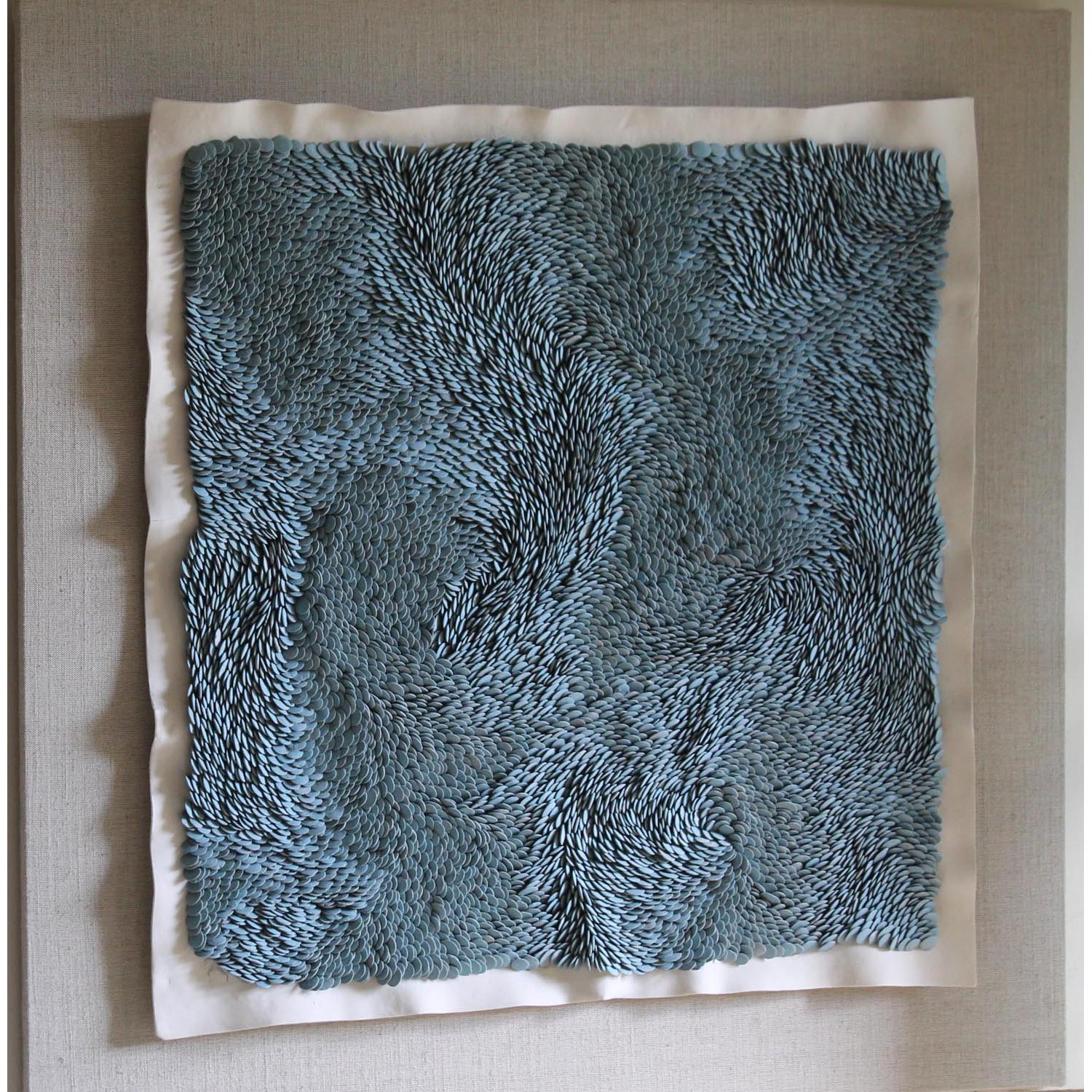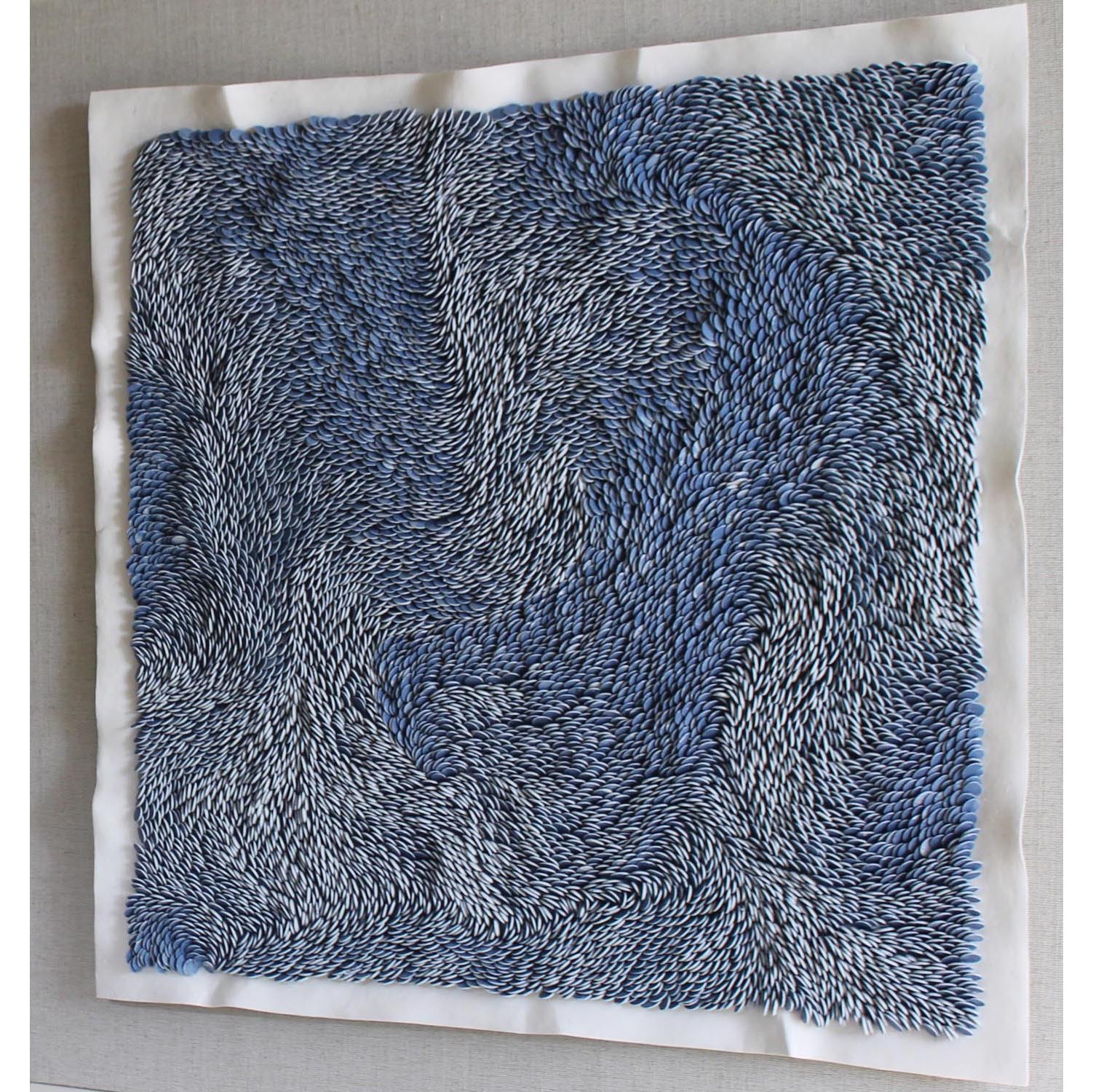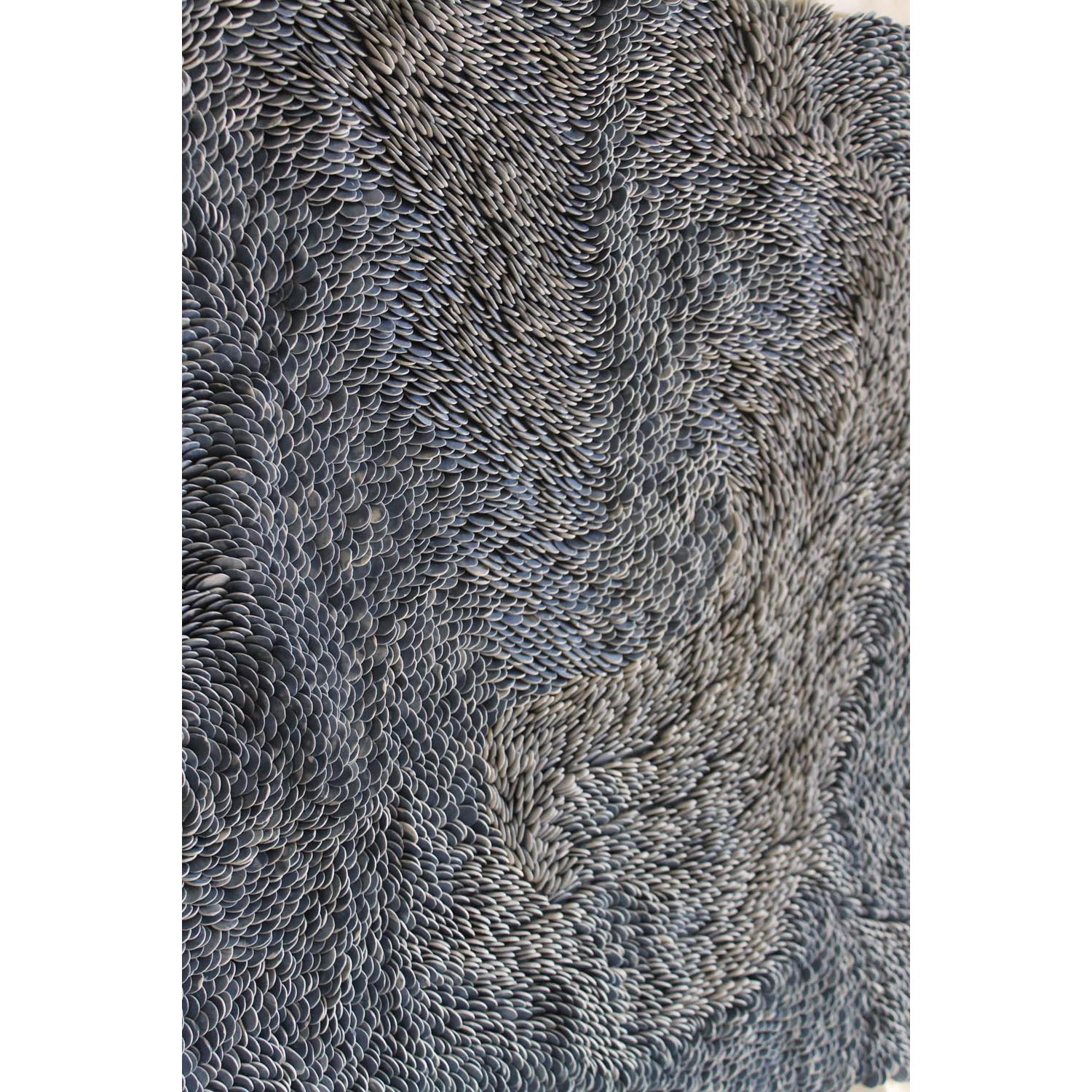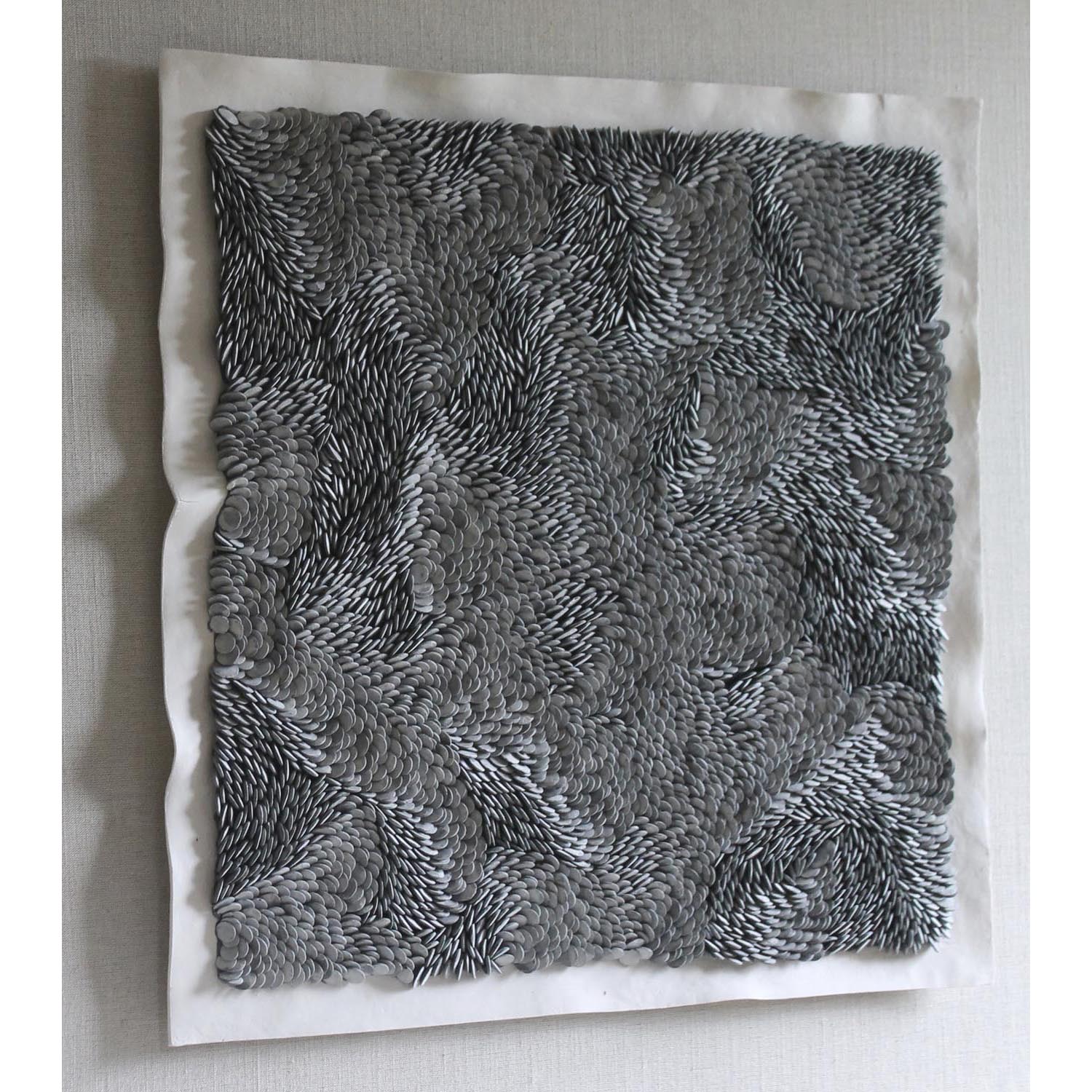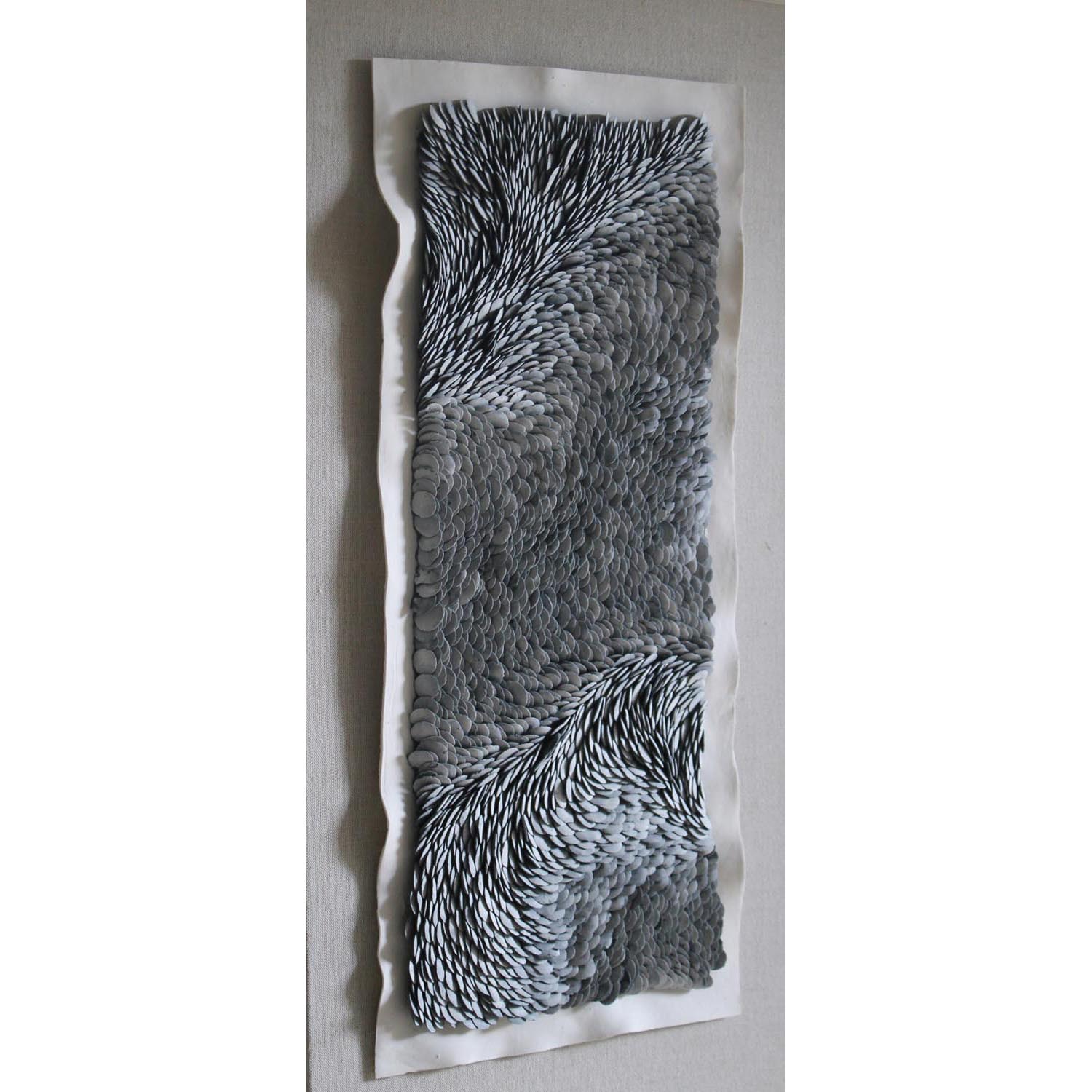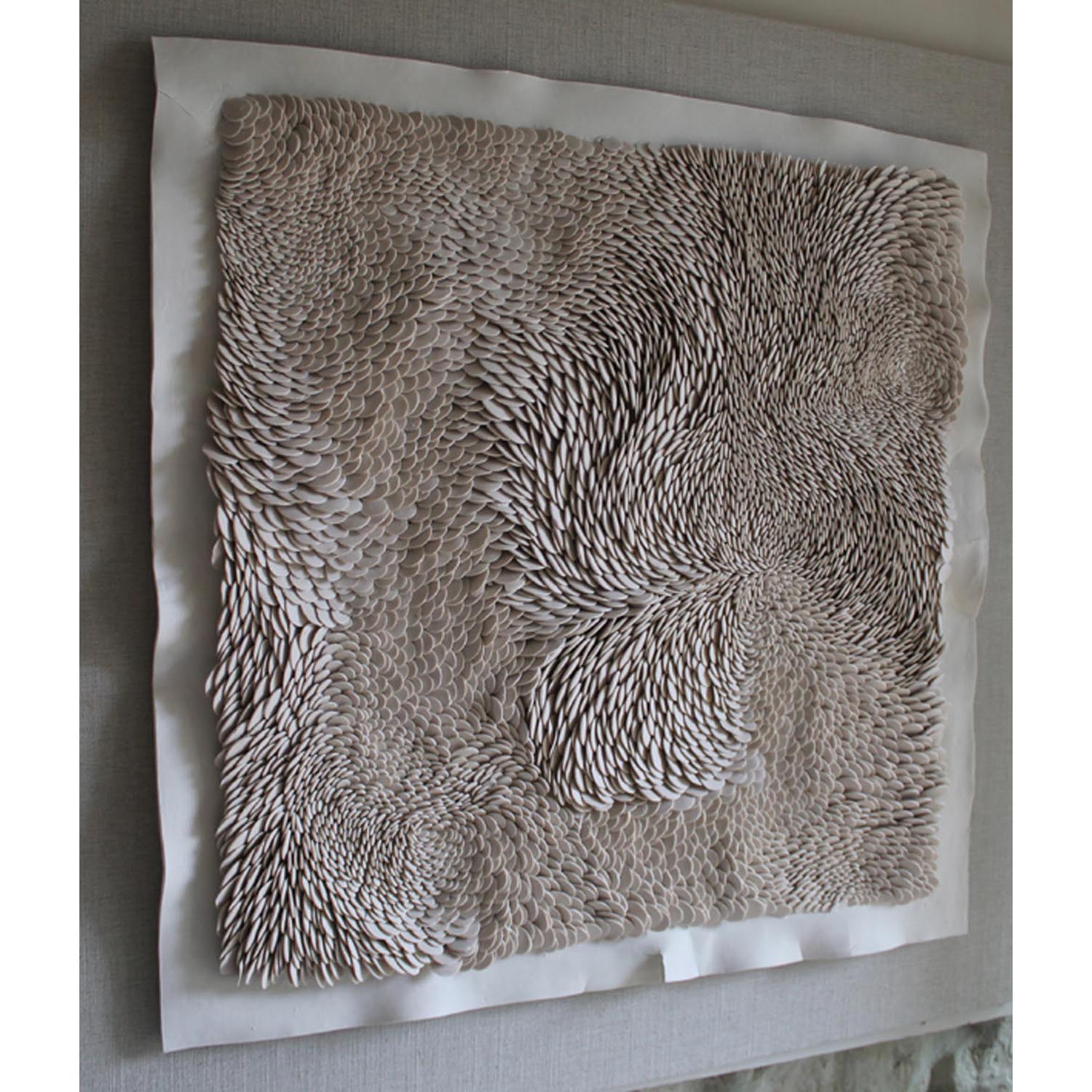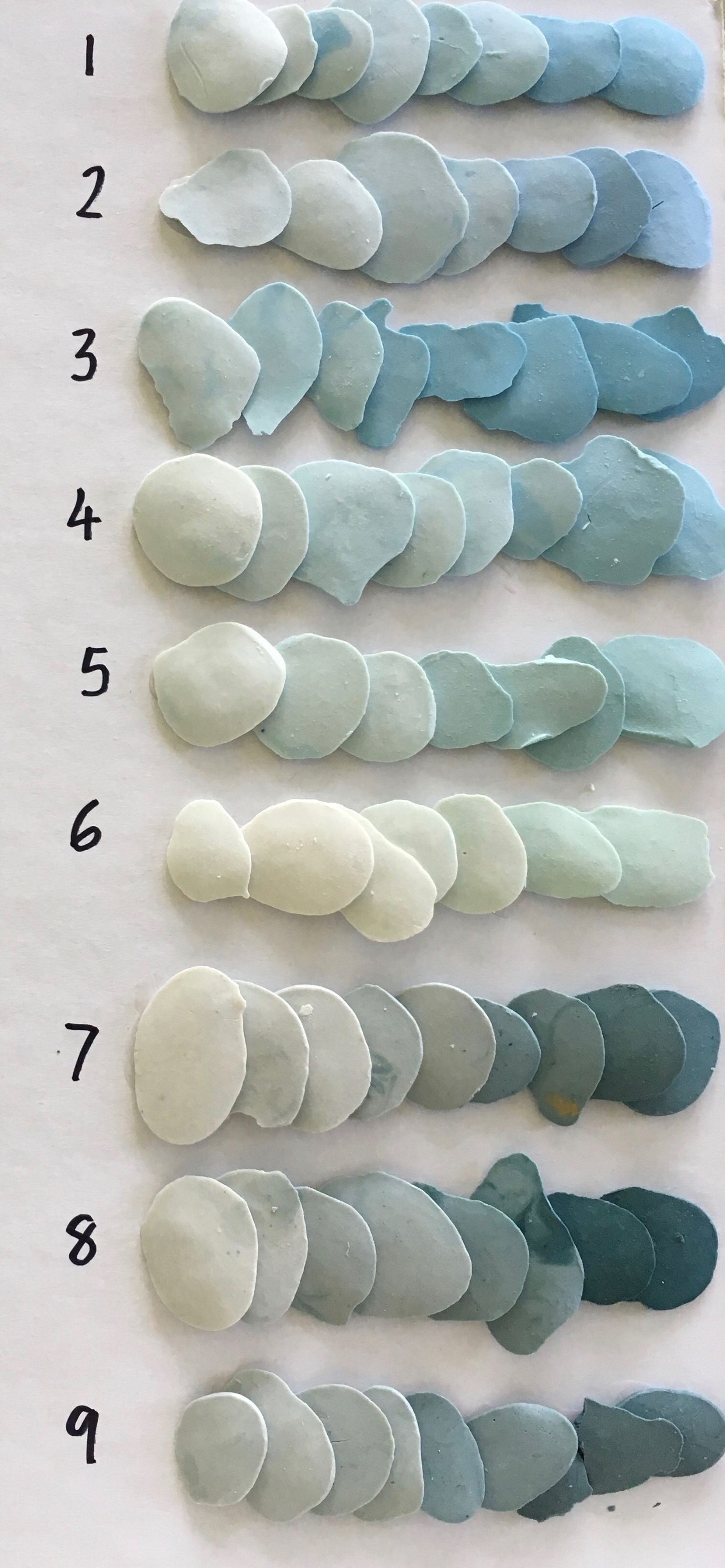Small Scale
FLOWS ON PORCELAIN
DESCRIPTION: Intense and detailed textural Flows built onto a porcelain under-sheet and the whole work is fired as one, creating a naturally wavy porcelain border. The work is then float-mounted onto a linen board for framing.
IDEAL SETTING: Domestic or small scale spaces where the detail in the surface of the beads and Flow can be appreciated close up; at over 10m distance they start to resemble a velvety texture.
NOT SUITABLE FOR: Outside.
SIZE: Limited by the kiln: the porcelain size is no more than 65cms x 65cms (on any size mount board).
PRESENTATION: These delicate works require framing for protection either in painted wood with museum glass or Perspex (Lucite) cover frame.
SHIPPING: Flows on porcelain require specialist art shipping because the porcelain under-sheet is vulnerable to stress fracture when knocked.
TRADE PRICING: These works can be any size (within 65 x 65 cm) and are costed by porcelain size at £18,000.00 per sq. metre with no additional cost for mount board size. For example:
Largest size possible (65 x 65 cm porcelain + mount board) £7,605.00 + VAT for natural porcelain.
Colour stain extra 10%
Two tone colour extra 20%


